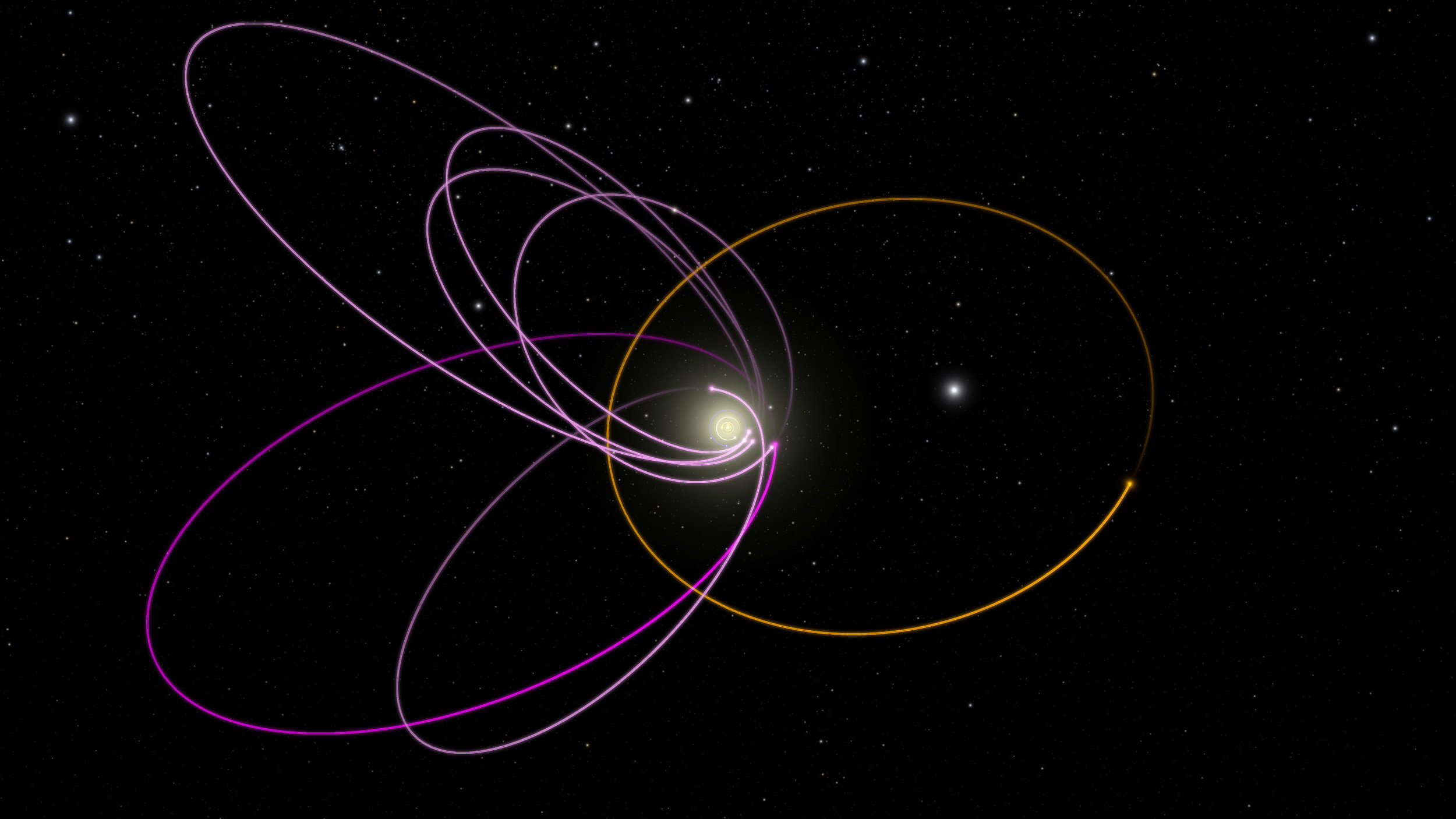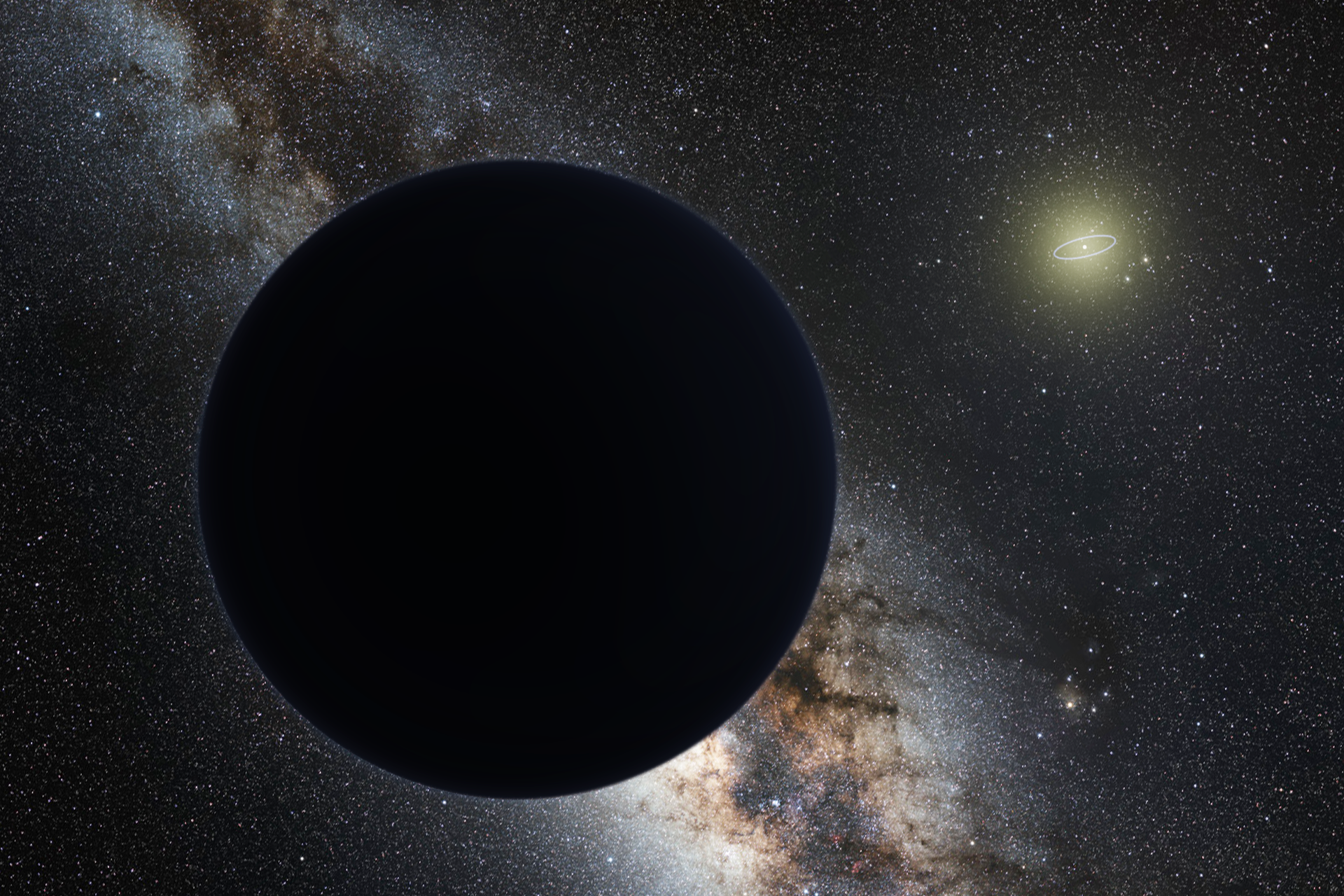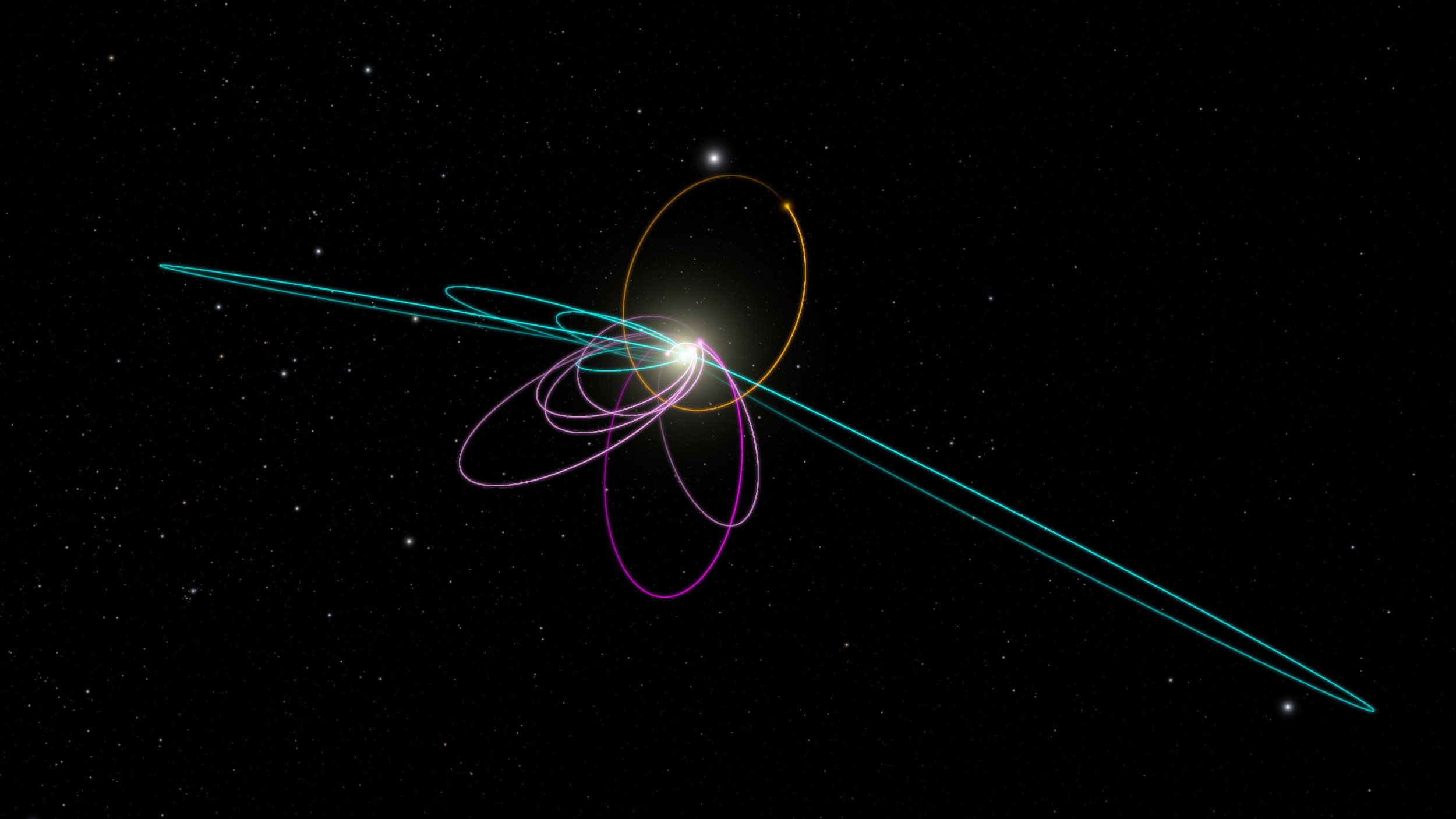PLANET NINE AND THE DISTANT SOLAR SYSTEM
At the outskirts of the solar system, beyond the orbit of Neptune, lies an expansive field of icy debris known as the Kuiper belt. The orbits of the individual asteroid-like bodies within the Kuiper belt trace out highly elongated elliptical paths, and require hundreds to thousands of years to complete a single revolution around the Sun. Although the majority of the Kuiper belt’s dynamical structure can be understood within the framework of the knowneight-planet solar system, bodies with orbital periods longer than ~4,000 years exhibit a peculiar orbital alignment that eludes explanation.
In Batygin & Brown (2016a), we showed that the observed clustering of Kuiper belt orbits can be maintained by a distant, eccentric, Neptune-like planet, whose orbit lies in approximately the same plane as those of the distant Kuiper belt objects, but is anti-aligned with respect to the perihelia of the minor bodies. Indeed, this clustering appears to be real, and not a consequence of observational bias (see Brown & Batygin 2019, 2021) The particular mode of dynamical coupling responsible for the observed clustering is exceedingly intricate, and involves a complex interplay between mean motion resonances and secular interactions (Batygin & Morbidelli 2017).
In addition to accounting for the observed grouping of trajectories, the existence of such a planet naturally explains other, seemingly unrelated dynamical characteristics of the solar system. Namely, the origins of dynamically detached Sedna-type orbits as well as the generation of highly inclined (and retrograde) trans-Neptunian objects (Batygin & Brown 2016b) all seamlessly fit within the framework of the Planet Nine Hypothesis. In a recent review article (Batygin et al. 2019), we have delineated an up-to-date analysis of the current observational census of distant Kuiper belt objects (KBOs), and amalgamated our analytical understanding of Planet Nine-induced dynamical evolution with a suite of large-scale numerical experiments. This work yielded an improved set of predictions for Planet Nine’s orbit and mass that we have further expanded upon in Brown & Batygin (2021). Furthermore, in Batygin & Brown (2021), we demonstrated how Planet Nine’s gravity can “unfreeze” the orbits of Inner Oort Cloud objects, and re-inject them into the outer solar system, mixing them with the distant Kuiper belt.
The search for Planet Nine is now in full swing.



